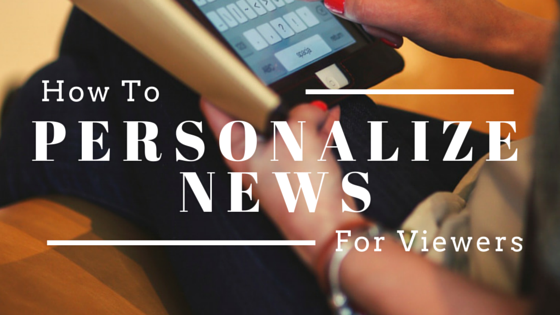Every day, broadcasters struggle for new ways to stay relevant as viewers spend more time watching video online than on TV. According to a 2014 Time article, more than 2.5 million homes have no cable or broadcast signal, and use a computer for all television viewing.
Using Social Media to Keep Viewers Updated on Stories of Interest
Fortunately, this doesn’t have to mean the demise of broadcast news. Many viewers already engage with local TV in multiple ways—watching some news on TV, and following stories online for breaking news or updates. Checking a station’s website for more information has given way to following/liking/retweeting a broadcaster’s TV coverage of news. A viewer who follows a TV station’s website may see some of its content pop up in his or her news feed, depending on the social network, the amount of time the viewer actually engages with the broadcaster, whether the broadcaster spends money to boost its posts, and other factors.
When a viewer likes or comments on a post, he or she will usually receive updates as others comments or the station adds more news. Even with notifications turned off, audience members are more likely to see posts they’ve commented on or liked appear in their news feeds.
Stop Repeating Social Media Links and Start Engaging with Viewers Instead
How can broadcasters take advantage of this?
Instead of just encouraging viewers to “follow us on Twitter/Instagram, like us on Facebook!”(which most people have heard so much it’s become background noise), ask viewers to share their opinions or personal stories on a topic.
For example: “Do you agree with the mayor that the intersection of Main Street and Fifth Avenue is dangerous and needs a stoplight installed? Have you ever had a close call or accident there? If so, we want to hear about it. Just click on this story on our Facebook page to comment, or Tweet to us at…”
You can increase engagement by promising to share some of the social media posts about a topic on a later news broadcast. This not only serves to gain likes/follows for individual posts, it also encourages audience members to continue watching your newscasts. Plus it draws in friends and followers of the viewers who comment.
Using Subscription Text/Email Alerts Wisely
Many TV stations offer a service that allows viewers to sign up for news updates, previously by email but now mostly by text. In theory, this is a great way for audience members to keep up with news when they’re away from a TV, or between news broadcasts.
In practice, many subscribers ditch the service if they start getting updates too often, or about things that don’t interest them. Some people have no interest in hearing about a reality star’s dress at a film festival, while others would rather hear about that than the new tax law. Nobody wants to get updates every five minutes.
Update subscriptions should ask viewers how frequently they want to get updates, what topics they want updates about, and what level of importance they assign to updates of each subject that interests them.
Curated News: Broadcast Television’s Future?
Last year, Reuters released an app that promised to collect news stories of importance to the individual user, essentially offering to put together an individual newscast for a subscription fee. While most TV stations can’t afford to do the same with their own apps yet, news apps can offer some level of personalization. Apps often offer a treasure trove of information about the people who download them, and that data can be used to recommend more relevant stories.
Talk to your app’s designer or IT person about ways to personalize your TV station’s app. What permissions do you currently require when users download it? Can you use their location to recommend the stories they would find most interesting? What about recommending news based on their web searches or their answers to questions they’re asked when first installing the app? If your app does not ask for permission to access to the user’s activities outside the app, can you still take the end users’ search and reading patterns within the app to recommend stories each user would find most interesting?
If nothing else, make sure you are collecting and saving solid data from your app. This will come in handy if you need information about audience demographics, which stories are most popular, and what features of the app are used the most.
[su_note]Learn more about the School of Broadcast Journalism at the New York Film Academy by clicking here.[/su_note]
